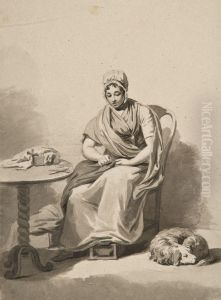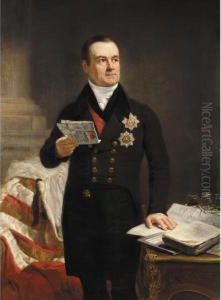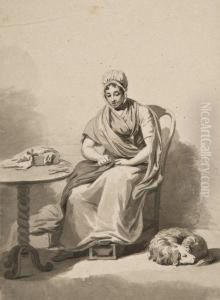Jan Willem Pienemann Paintings
Jan Willem Pienemann was a 19th-century artist from the Netherlands, born on November 4, 1779, in Abcoude, which was then part of the Dutch Republic. He was primarily known for his work as a portrait painter. Pienemann’s artistic journey began under the tutelage of Jurriaan Andriessen, a decorative painter and art teacher, who was well-regarded in the Dutch art scene of the time. With Andriessen’s guidance, Pienemann developed a strong foundation in the arts, which he continued to build upon throughout his career.
Pienemann’s work gained recognition, and he eventually became a court painter for King Louis Bonaparte of Holland, who was Napoleon Bonaparte's brother and was installed as the King of Holland. This positioned Pienemann within the upper echelons of society, where he had the opportunity to paint portraits of notable figures of the time. His style was rooted in the neoclassical tradition, which was prominent during this period. This influence is evident in the emphasis on clarity of form, elegance of composition, and the calm and idealized portrayal of his subjects.
Beyond his role as a court painter, Pienemann also contributed to the development of arts education in the Netherlands. He was appointed as the director of the Royal Academy of Fine Arts in Amsterdam, a prestigious position that allowed him to influence the next generation of Dutch artists. In his later years, he continued to paint and remained active in the Dutch art world.
Jan Willem Pienemann passed away on April 8, 1853, in Amsterdam. His legacy is preserved through his portraits, which capture a unique blend of individual character and the aesthetic sensibilities of his time. While he may not be as widely known as some of his contemporaries, his contributions to Dutch portraiture and art education have secured him a place in the annals of 19th-century European art history.



